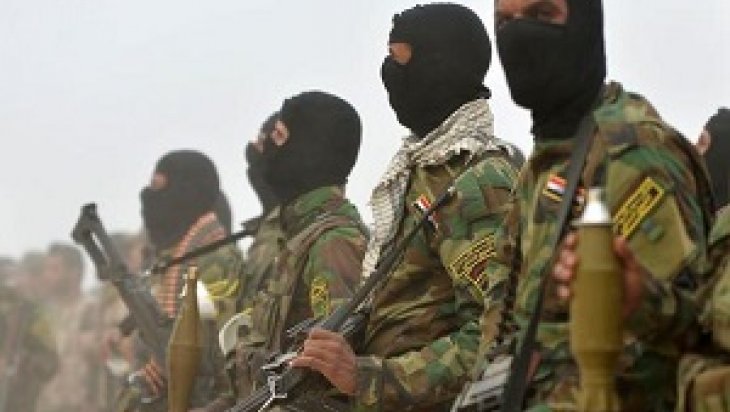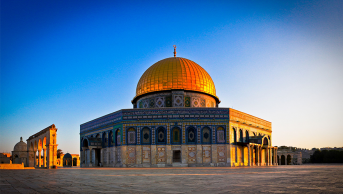Tal Afar and the Operation to Rescue Mosul: Risks and Opportunities

With the Mosul offensive, the fight against DAESH was carried to a new and critical dimension. We understand the importance of Mosul, which is in a state of capital of counterfeit “caliphate” Iraq, to DAESH in terms of its militants’ persistence and resistance not to give the city in. Before, the organization had left many cities even without clashing. It did not carry out any battle that it knew it was going to lose. On the other hand, in spite of the victory news which came on the first weeks, Mosul-based conflicts have a potential to continue longer or for months than expected.
On the contrary to the past, the expectation of people was a common view that DAESH Militants would stay in defense instead of offense. Primarily with the arbitrary mass executions, the organization spread fear and panic in civil society. It is understood that by compounding people in the city center, the organization is planning to use city-dwellers as a human shield in a potential town battle. In addition to this, DAESH keeps asserting itself with counterattacks in unexpected places. In this way, the organization, for example, suspended the highway between Baghdad and Amman. Once again, it unexpectedly mobilized its sleeper cells in Kirkuk with the initiation of Mosul operation.
There is a common view that sooner or later DAESH will be removed from Mosul. The discussion in this subject is concentrated on “when.” According to Kurdish military specialists, Mosul offensive is estimated to be completed in 6 months at the earliest. However, as a pessimistic scenario, a civilian massacre comes to mind. Americans speak of unrealistic time periods like 2 months in the interpretations based on November elections.
On the other hand, a military success in Mosul does not mean that DAESH will terminated since a part of administrators and militants of the organization have moved to Syria. According to the security intelligence reports, it has been recorded that since 3 weeks, two thousand three hundred militants have moved to the Al-Raqqah line. This will ensure that the war will continue by strengthening them there. In Mosul, it will keep the resistance level high by using guerilla war method and civil society as a shield without hiring a large group of militants. In order to make tempted and disappointed Sunnis of Iraq join the organization, it will probably stand back and wait. In this sense, recruits to the organization can occur especially if Shiite militias entering in Mosul engage in attacks of revenge against Sunnis. After all, this is not a novel phenomenon.
On the other side, another case that will affect Sunnis tendency and manners will be related to the Shiite-weighted central government’s approach to the Sunnis after the rescue of Mosul from DAESH. After defeating the common enemy that everyone struggles with, Mosul can be a trigger for a new civil war as well as a key to the “Sunni question.”
Mosul offensive has already taken on a dangerous dimension due to the endless resistance of DAESH and irresolvable “Sunni question” of Iraq. Developments up to now show that civil war threat is a more likely scenario. As a part of the fight against DAESH, countries that have the aim of supporting or involving Iraq in a military sense should comprehend the regional balance in addition to this danger. Otherwise Mosul case may move beyond the concept of civil war and ignite the wick of a regional war.
From the point of Ankara, the priority issue is the terror problem that became rampant in the area now. The solution of the PKK and DAESH problem is no more in its own territory but requires regional intervention which means entering into Syria and Iraq. This equation has become so complex that the need of intervention in both issues by giving the same priority has clearly arisen. However, for European and some Middle Eastern countries, PKK is almost out of their list of terrorist organizations because they put terrorist organizations in order of priority only by means of threats to themselves. Turkish government, which is obliged to involve into the field without making discrimination among organizations, will clearly pursue its determination.
Another neighboring country Iran’s separatist manner in Iraq and the will of dispatching Shiite militias directly to the field bear the risk of escalation in an unstoppable civil war in Iraq. The direct support of Iran to the groups of Hashd al-Shaabi may deepen internal conflicts in Iraq. Also, Iran revealed another string of tension between Kurdish groups of KDP and Patriotic Union of Kurdistan (KYB)-Goran. Moreover, in frictions of Sunni groups and Shiite-Sunni Turkmen conflicts, we see Iran from time to time. From past to present, its direct style to engage in relationship with PKK is thought-provoking.
There are very important and remarkable local factors that play a role in Mosul offensive. Conflict dynamics between the groups from different tribes or sectarian identities are getting stronger and this development is for the benefit of DAESH in long term. Especially, conflict dynamics among different Arab, Kurdish, Turkmen elements are posing an important risk in Mosul’s south and west belt, from Al-Jazira Desert to Syria. This conflict potential carries a risk to blaze more even DAESH is removed from the city.
Sura and Hammam Al-Alil regions, where there are tribal structures in the south Mosul, are like an ancient stronghold of the armed resistance when American forces entered in Iraq. In Al-Zarqawi period, these regions formed Al-Qaeda’s most significant core. In this region, there are tribal extensions throughout the Syria border which are mostly from Al-Mutetavit, Al-Ciheys and Shammar tribes. The regions of these tribes have witnessed conflicts with Kurdish forces in past 10 years. Eventually inhabitant of several villages in this region migrated. With the fall of Baghdad in 2003 and Iraqi Kurdistan Region’s taking control of several disputed areas, the conflicts had continued. This situation does not abolish the fact that there are communities that mostly belong to Shammar and Al-Cerba tribes and ally with Kurdish forces in the district of Rabia on Syria-Iraq border.
This regiona together with the south belt Al Baac sahara forms a desert depth, which is like a trench for DAESH and was for Al-Qaeda before. USA’s experienced commander in Iraq, David Petraeus, characterizes this place as the most important key area in military operations. This is because the aforesaid region lies towards the areas of organization in Deir ez-Zor and Al-Raqqah. Hence, the line that connects Mosul to Al-Raqqah through Al-Jazira has a vital importance for DAESH. Especially, this area is very far away from Kurdish regions in the north and the regions where Shiites in Iraq are dominant.
Another factor that feeds the regional tension is different calculations which are carried out on Tal Afar in the west of Mosul. After ISIS took control of the area, the risk of deepening in sectarian cleavages among Turkmens who are the majority population in the region emerged. If it is remembered that Tal Afar is located on the beginning of the road from Mosul to Syria and in the north of the desert depth, the future of such a region that has a strategic position will probably trigger a new conflict. It is an important requirement that this conflict should not be carried out by the sectarian identities.
In case Turkey is excluded in the process of Mosul, the pressure of radicalization on Turkmens that are forced to be marginalized by internal balances in the country from 2003 to present may increase. If this process cannot be managed, Turkmens may face a huge massacre in this area. To include the marginalized Turkmen groups in normalization process should be one of the top priorities. Tensions between Arab tribes and Kurds, Sunni Turkmens and Shiite Turkmens may provide a proper ground for DAESH to extend the war. Especially, conflicts in Mosul’s south and west belts can be affected by this process.
IRAN CORRIDOR MAY RESULT IN ANKARA – TEHRAN CONFRONTATION
It is a reality that Hashd al-Shaabi militia forces have a strategic aim in heading for a Turkmen town, Tal Afar. Iran’s aims to ensure a free corridor to Syria through Iraq by supporting sectarian groups are behind this move. Iran’s aim is beyond ensuring this corridor and is related to to provide a passage to Mediterranean through Syrian shores including its plans to export gas to European continent.
Tal Afar is very important for Iran due to its geographical location. Thus, this geographical location makes Tal Afar a central station in the context of continuation of the flow of financial and human resources from Iran to Syria. Tal Afar is more assuring than other places due to its demographic structure. The population of Tal Afar consisted of Shiite and Sunni Turkmens before it fell in the hands of DAESH. Claims about Hashd al-Shaabi militias’ aim to control this town is limited to prevent DAESH from escaping to Syria are not convincing according to politicians in the region.
After militias in Hashd al-Shaabi are prevented from getting close to the border of Mosul, there is no other option for Iran but to facilitate its road to Syria not to be blocked. This could be possible with adding Tal Afar to the agenda of taking back Mosul. At this point, Iran’s priority is to exempt Tal Afar from military operations in Mosul and ensure its control by the militias. For it’s aim of maintaining the control in several regions in Iraq, Iran does not need a direct military intervention as Turkey tries to do currently. Hence, within this context Iran uses Hashd al-Shaabi militias to reach its aim.
Cevad al-Tilebavi, the spokesman of one of the prominent groups in Hashd al-Shaabi , Asa'ib Ahl al-Haq militias, said in his statement: “Hashd al-Shaabi management officially assigned us to save Tal Afar district.” Al-Tilebavi also said: “Hashd al-Shaabi’s duty is to prevent DAESH components from escaping to Syria and to isolate Mosul completely from Syria.” On the other hand, it is spoken about that some of Hashd al-Shaabi groups are making preparations for deployment in an area that is only a couple of kilometers away from Turkish forces’ emplacements in Bashiqa. This information demonstrates that the deployment of these groups occur in Turkish forces’ artillery shooting range, and in the same way Turkish forces will be in these groups’ range of the artillery shooting.
From this point, the possibility of an armed conflict between Iran (through its proxies) and Turkey in the aforementioned area is increasing. While these possibilities are being discussed, the existence of information pointing out a cooperation between Hashd al-Shaabi command and PKK –whose warriors are deployed around East Sinjar-should also be taken into consideration.







